Bromeliads are not just beautiful to look at but also easy to care for. They’re perfect for beginners who want to try their hand at indoor gardening or those who want a low-maintenance plant that can brighten up the home. Remember, when caring for your Bromeliad, ensure it gets enough sunlight and water without overdoing it.
Bromeliads are a great choice for indoor plants due to their low-maintenance nature and stunning beauty. With the right care, they can thrive indoors and bring color and life to any room. Consider lighting requirements and size factors when choosing a Bromeliad to grow indoors.
Bromeliads are an excellent choice for anyone looking to add greenery and color to their indoor space. Their various colors and shapes can fit into any home decor style. Their easy-care requirements make them perfect for beginners or those who don’t have much time to devote to plant care. While there are some downsides to growing Bromeliads indoors, such as potential pests and diseases, you can manage these with proper care and attention.
Growing Best Bromeliads Indoors
Aechmea
Aechmea plants are known for their striking foliage, which can be green, silver, or variegated with stripes or spots. The leaves form a rosette shape that holds water in the center, making it easy to care for these plants. This plant does not require much light and prefers moderate watering.
In case you missed it: Best Planter Materials to Use Indoors or Outdoors

Another unique feature of Aechmeas is its ability to improve air quality indoors by removing pollutants such as formaldehyde and benzene. When growing an Aechmea indoors, ensure proper drainage as they do not like standing water around their roots. You can use a well-draining potting mix to help keep the soil moist but not soggy.
Guzmania
Guzmania is known for its beautiful and vibrant flowers, lasting several months. Guzmanias come in various shapes and sizes but share some common features. One of the most striking things about Guzmania plants is their foliage. Most varieties have green leaves with bright red or orange markings along the edges or near the base. The flowers of Guzmania plants are equally impressive. They grow on tall spikes that rise above the foliage, making them visible from a distance.
The blooms are tubular, with colorful bracts surrounding them like a crown. Guzmanias thrive indoors as houseplants because they prefer low to medium light conditions and high humidity levels. They also do well when grown in pots filled with well-draining soil mixtures that retain moisture without becoming waterlogged. If you’re looking for a stunning indoor plant that’s easy to care for and adds color to any room, consider adding a Guzmania to your collection.
Neoregelia
Neoregelia plants are known for their unique rosette-shaped leaves in various colors, such as green, red, yellow, orange, and pink. One great thing about Neoregelia is that it’s easy to care for. This plant can thrive in low-light conditions and doesn’t require frequent watering. However, you should make sure its soil stays moist but not waterlogged. Another interesting fact about Neoregelia is that it produces small flowers from the center of the rosette once it reaches maturity.
In case you missed it: How to Grow and Care for Dieffenbachia (Dumb Cane) Plant Indoors: A Beginners Guide
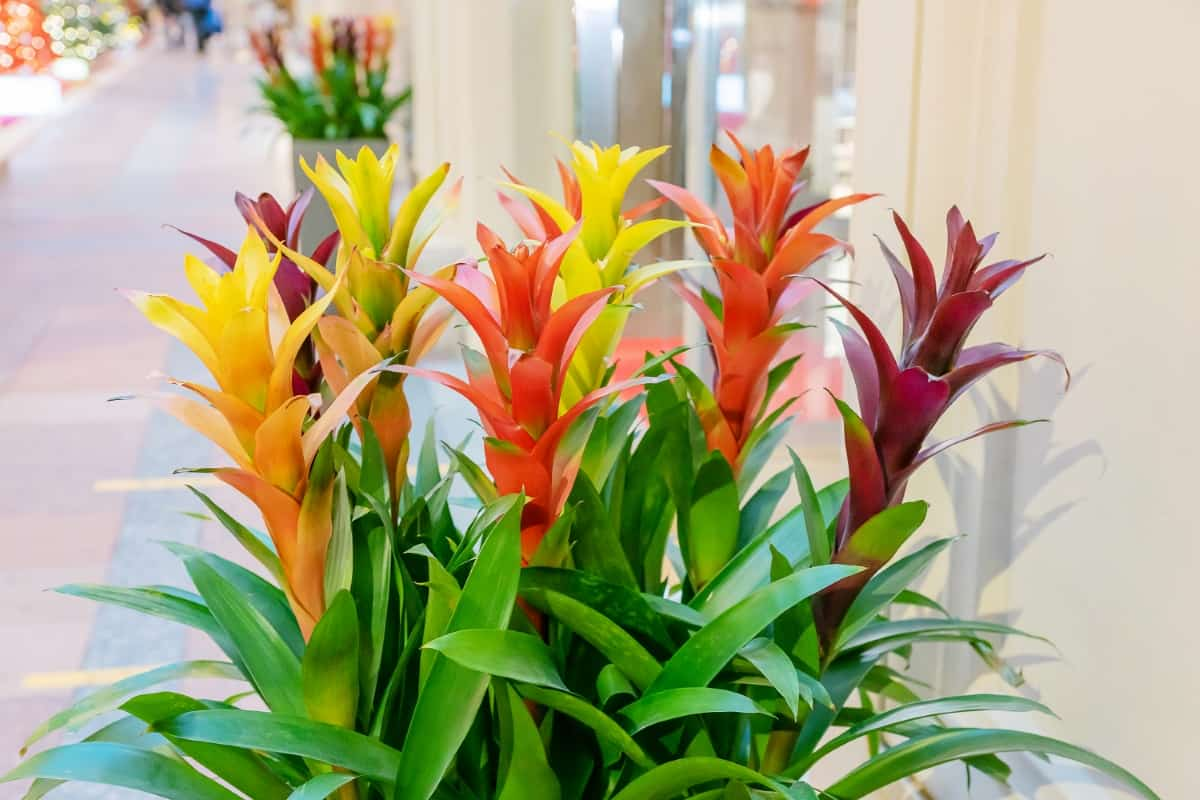
If you want to propagate your Neoregelia plant, you can separate the offsets from its base during spring or summer. Once separated, these offsets can be planted in another pot with well-draining soil. In terms of aesthetics, Neoregelia makes an excellent addition to any indoor space as it adds beauty without taking up too much space. You can place them on shelves or windowsills where they’ll get enough light.
Vriesea
Vriesea is a popular Bromeliad that can be easily grown indoors. One of the best things about Vriesea is its adaptability to different light levels. It can thrive in bright and low-light environments, making it an ideal choice for those gardeners who want to add beauty to their homes. Another advantage of Vriesea is that it doesn’t require frequent watering. Over-watering this plant can cause root rot, so it’s important to let the soil dry before watering again.
This makes Vriesea a low-maintenance option for those who may not have much time or energy to devote to plant care. Regarding fertilizing, Vriesea only needs occasional feeding during its growing season (spring and summer). A general-purpose houseplant fertilizer will suffice, but don’t over-fertilize, as this could also harm the plant. Vriesea is an excellent choice for anyone looking for an easy-to-care-for indoor plant with striking beauty. With proper care and attention, this Bromeliad will reward you with vibrant colors and lush foliage all year round.
Tillandsia
Tillandsia is unique and fascinating Bromeliads that has become increasingly popular recently. One of the reasons for their popularity is that they are very easy to care for and can grow without soil. Tillandsia can be found in various shapes and sizes, from small clumps to large rosettes with long spiky leaves. They come in many colors, from greenish-gray to vibrant pink or purple. One interesting fact about Tillandsia is that they don’t need much water compared to other plants due to their ability to absorb moisture through their leaves.
In case you missed it: How to Grow and Care for Kalanchoe Indoors: A Beginners Guide
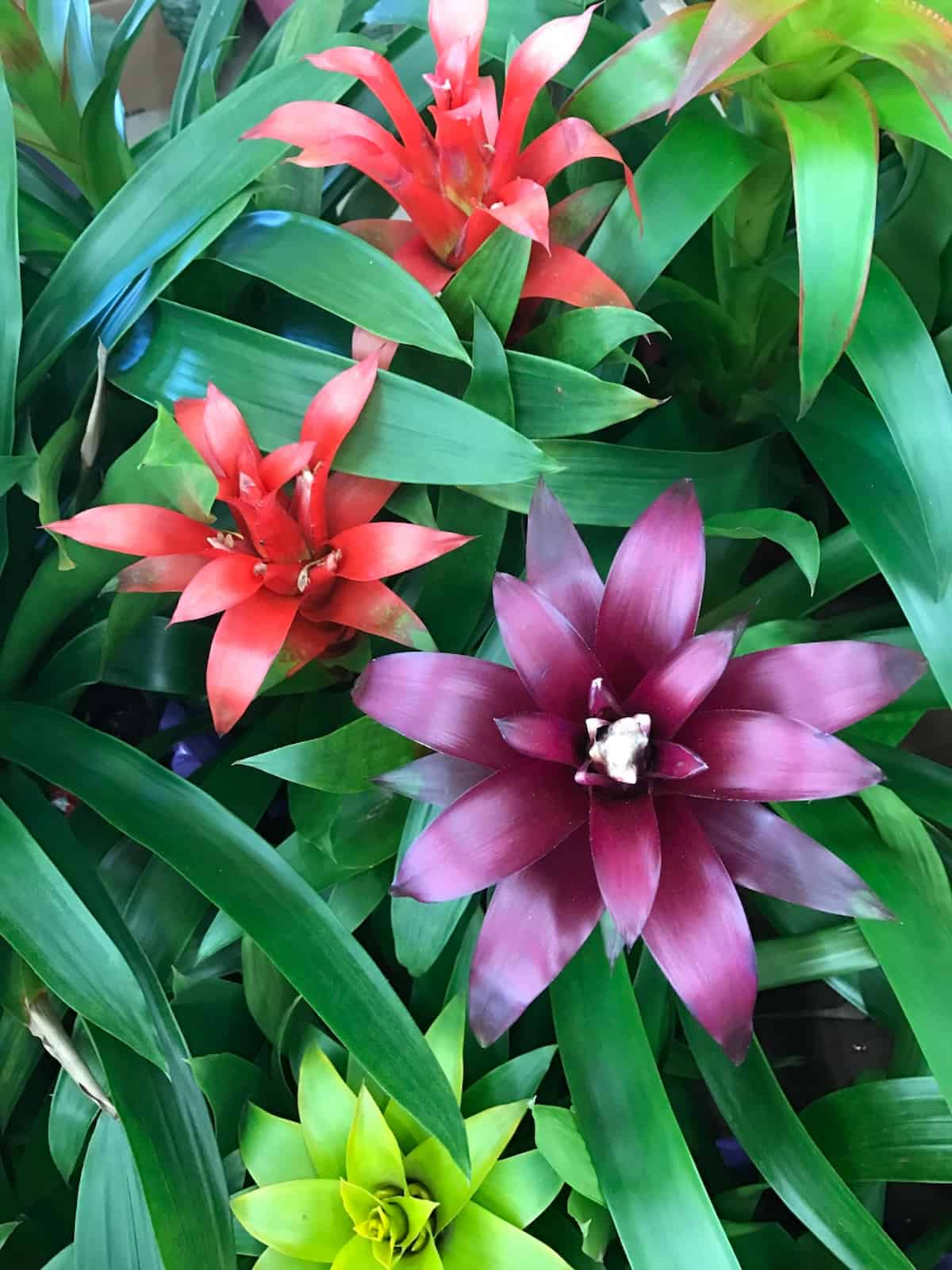
Simply misting once a week or soaking them in water for a few hours every couple of weeks should suffice. Tillandsias make great indoor plants since they thrive on bright but indirect light, making them perfect for windowsills or shelves near natural light sources. However, it’s important not to place them under direct sunlight since it could burn their delicate leaves. Tillandsias are excellent houseplants for anyone looking for an eye-catching yet low-maintenance addition to their home decor.
Billbergia
Billbergia is another fantastic choice for those looking to add color and texture to their indoor garden. These fascinating Bromeliads are known for their stunning, tubular flowers in vibrant shades of pink, purple, red, and blue. They often feature eye-catching bands or stripes on the leaves as well. One aspect that makes Billbergia an excellent option for indoor growers is its adaptability to various lighting conditions.
While they prefer bright indirect light, they can tolerate lower light levels, making them suitable for those with limited natural sunlight in their homes. When it comes to watering your Billbergia plant, consistency is key. Maintain evenly moist soil without letting it become waterlogged; doing so will ensure healthy growth and prevent root rot issues. With just a little care and attention toward lighting and watering needs, anyone can easily grow beautiful Billbergias indoors.
Cryptanthus
Cryptanthus has become popular among indoor plant enthusiasts because of its striking foliage. One unique feature of Cryptanthus is its ability to change color depending on light exposure. When grown in bright light, their leaves can turn into vibrant shades of pink, red, orange, or yellow. In low-light conditions, however, they tend to retain a green hue. Another interesting characteristic of Cryptanthus is that they grow best when planted in small groups rather than individually.
In case you missed it: How to Grow and Care for Friendship Plants Indoors
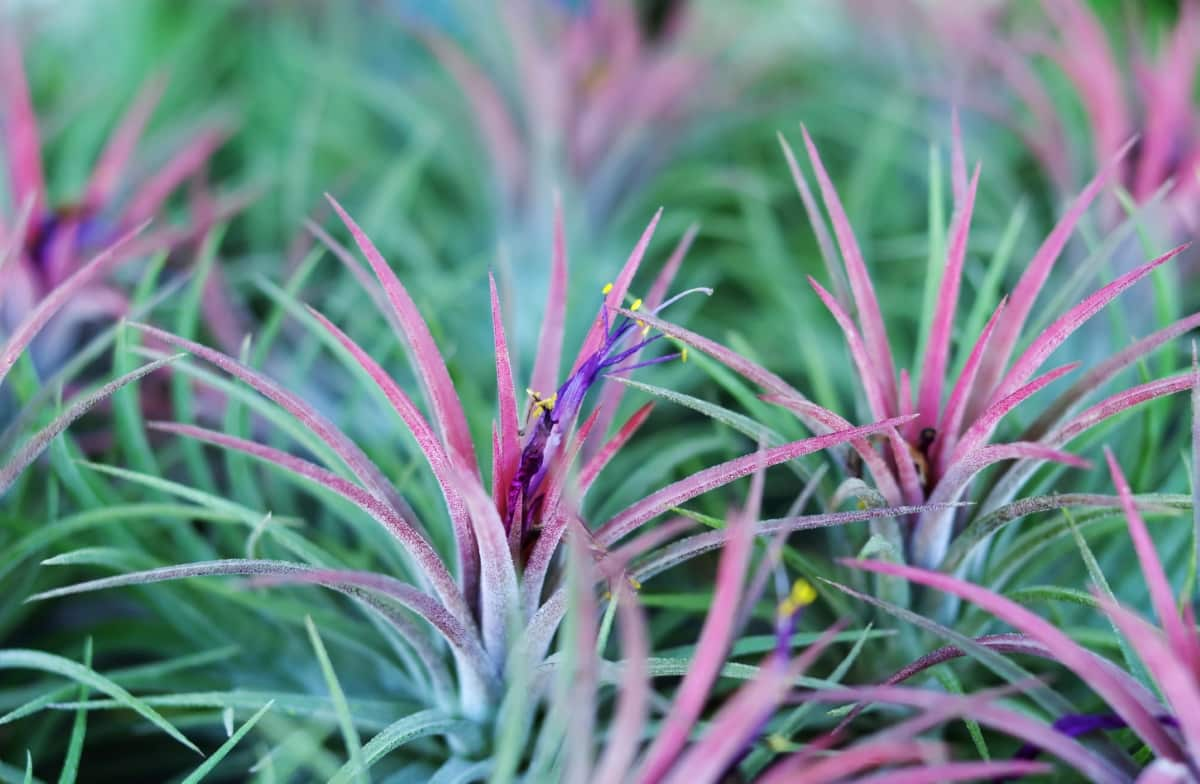
They thrive in humid environments and require regular misting to keep them healthy. While Cryptanthus may not produce showy flowers like other Bromeliads, their colorful foliage makes up for it. Their compact size makes them ideal for decorating small spaces such as apartments or offices. Cryptanthus are an excellent choice for novice gardeners who want an easy-to-care-for plant with stunning visual appeal.
Dyckia
Dyckia plants are known for their stunning rosette-shaped foliage in various colors, including green, red, orange, and yellow. Dyckia’s ability to thrive in full sun or partial shade makes it stand out from other Bromeliads. These tough little plants can be grown indoors and outdoors and require little maintenance. They need well-draining soil and should not be overwatered, as they are susceptible to rotting if left in standing water.
One unique feature of Dyckia is the spines that line the edges of their leaves. Depending on the species, these spines can vary in size and color but protect against predators such as herbivorous animals. Dyckia produces beautiful flowers on tall stems that grow above the foliage in spring and summer. The flowers may last for several weeks before fading away. Dyckias make an excellent addition to any indoor or outdoor garden due to their hardiness, low-maintenance requirements, and unique appearance with spiky leaves.
Hechtia Genus
The Hechtia genus is known for its unique appearance, with leaves forming rosettes and ending in spiny tips. One of the standout features of the Hechtia genus is their adaptability to different growing conditions, making them ideal for indoor cultivation. Another advantage of the Hechtia genus is its hardiness and resistance to pests and diseases.
In case you missed it: Small Indoor Plants for Apartment Living
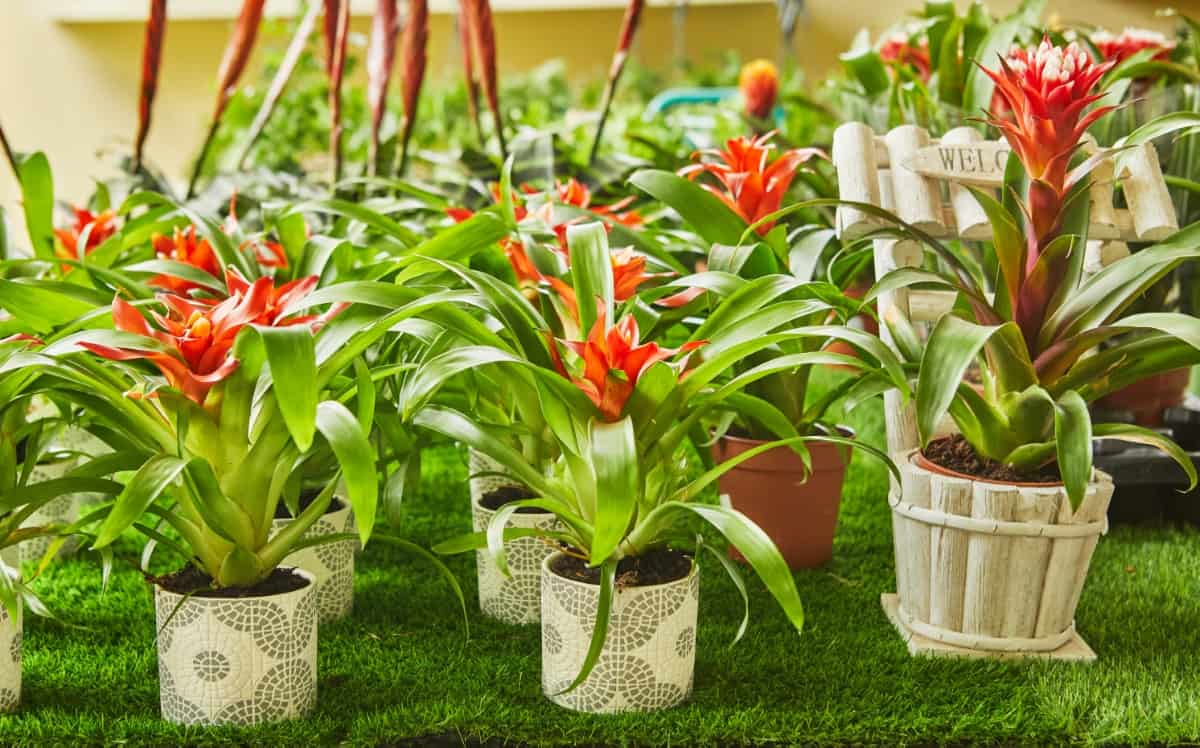
This makes them a great choice for beginner gardeners or those who don’t have much time to devote to plant care. Despite being relatively easy to grow, it’s important to note that the Hechtia genus does require well-draining soil. These plants do not need frequent watering, making them low maintenance. Including a Hechtia plant in your indoor collection can add interesting texture and shape while requiring minimal effort.
Portea
Portea is an epiphytic plant of Bromeliad, which means it grows on other plants without harming them. What makes Portea unique from other Bromeliads is its inflorescence or flower spike. The inflorescence of this plant can grow up to 3 feet tall. These fragrant flowers attract pollinators like bees, birds, and butterflies. Portea requires bright but indirect light for optimal growth.
It prefers humid environments but can tolerate dry conditions as well. When growing Portea indoors, mist the leaves regularly or place a tray filled with water near the plant to increase humidity levels. Watering should be done sparingly since overwatering can lead to root rot. Instead, allow the topsoil layer of the potting mix to dry out before watering again. Portea is a beautiful addition to any indoor garden due to its stunning flower spikes and easy-to-care requirements.
Ananas
Ananas is a type of Bromeliad that is perfect for growing indoors. One of the best things about Ananas is how easy it is to care for. They need bright, indirect light and can also tolerate some direct sun. Another great thing about Ananas is their ability to purify the air in your home. Like other Bromeliads, they absorb toxins such as formaldehyde from the air, making them an excellent choice for improving indoor air quality. Ananas is a perfect choice for anyone looking to add beauty to their indoor garden without too much fuss or maintenance required.
In case you missed it: 12 Cold-tolerant Indoor Plants For Winter Weather
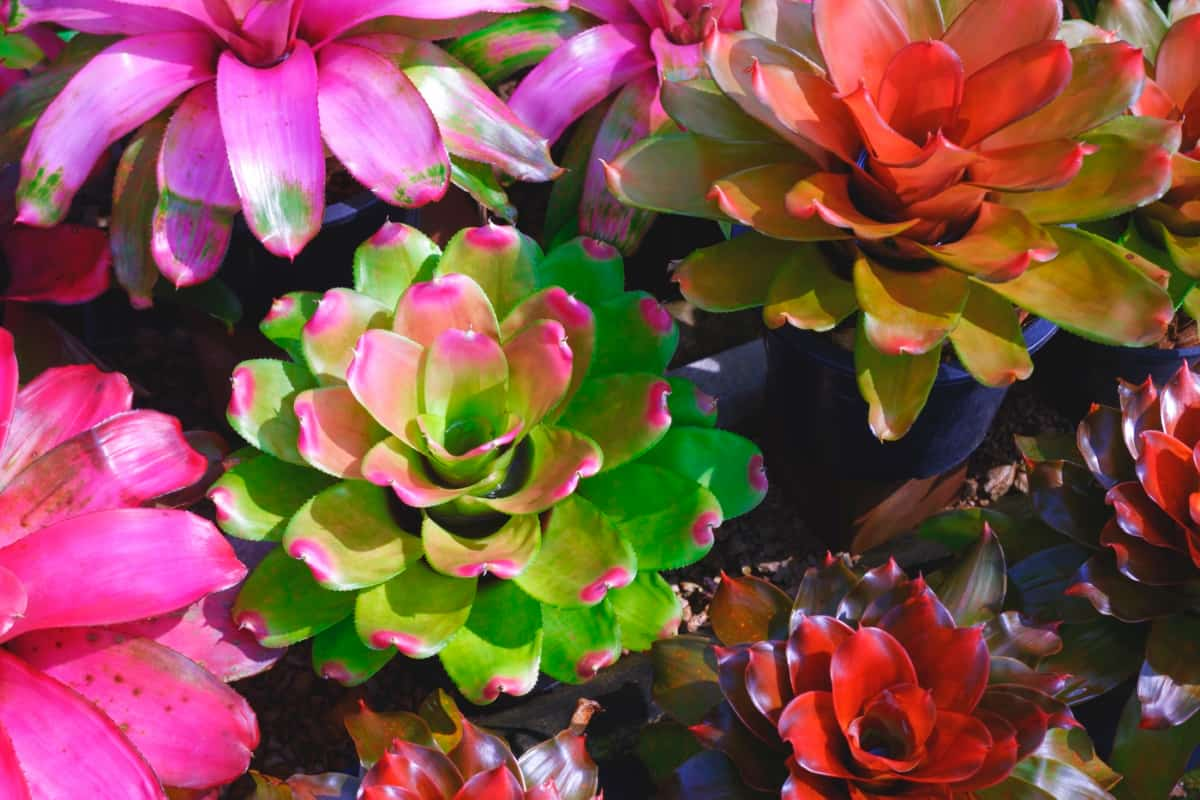
Nidularium
Nidularium comes in various shapes, sizes, and colors, making it an interesting addition to any indoor garden. One of the most unique features of Nidularium is its flower structure. The flowers are small and insignificant but are arranged in clusters inside a cup-shaped central rosette. The colorful bracts surrounding these flowers make them visually appealing.
Another advantage of growing Nidularium indoors is that they are low-maintenance plants. They need bright indirect light but can also tolerate low light conditions for short periods. When planting Nidularium, ensure they have a well-draining soil mix, as they can easily rot if their roots sit in stagnant water for too long. Fertilizing once every month with a balanced fertilizer will help boost their growth rate.
Conclusion
Bromeliads are ideal for indoor gardening. They’re easy to care for, beautiful, and come in various colors and shapes. If you’re a seasoned gardener or a beginner, there’s a perfect Bromeliad plant for everyone. Bromeliads are easy-to-grow plants that can add exotic beauty to any indoor space.
These tropical wonders create a stunning display in any room with their bright colors and unique shapes. So, go ahead and add some tropical flair with these stunning plants. With their low-maintenance care requirements and impressive beauty, it’s no wonder why Bromeliads have become so popular among indoor gardeners everywhere.
- How to Grow Tomatoes Organically at Home: A Comprehensive Guide
- Organic Gardening on a Budget: Low-Cost Methods and Materials
- Gongura Seed Germination and Planting Methods
- Cabbage Seed Germination and Selection
- Broccoli Seed Germination and Selection
- Asparagus Seed Germination and Variety Selection
- Seasonal Flower Gardening: Best Practices for Spring, Summer, Fall, and Winter
- How to Grow Hibiscus from Flower
- Plantation Ideas for Home Decoration: A Beginners Guide
- Flower Garden Designs and Layouts for Beginners
- Planting and Spacing Techniques in Papaya: A Beginner’s Guide
- Growing Gold: Essential Techniques for Planting Pineapples
- How to Make Kalanchoe Plant Bushy: Home Remedies and Solutions
- 11 Reasons Why Your Gardenia is Not Blooming: Home Remedies and Solutions
- Eco Elegance: The Guide to Designing a Drought-Tolerant Landscape
- Gardening on a Slope: Strategies for Hillside Landscaping
- Nourish and Flourish: Top Organic Mulches for Thriving House Plants
- Everything You Want to Know about Indian Mogra Flower: Discover Uses and Growing
- Green Thumb Success: Expert Tips for Cultivating Greenhouse Pumpkins All Year Round
- Maximize Growth & Flavor: The Ultimate Guide to Companion Planting in Herb Gardens
- How to Control Rhododendron Problems Naturally: Home Remedies and Organic Ways to Fix Them
- Natural Magic: The Remarkable Benefits of Cinnamon for Plants
- Best Steps to Revive Dying Tulip with Natural and Organic Treatment
- 10 Reasons Why Your Angel Trumpet is Not Blooming: Remedies and Treatment
- How to Fix Periwinkle Leaf and Flower-Related Problems: Natural Remedies and Solutions
- How to Fix Zinnias Leaf and Flower Problems: Discover Natural and Home Remedies
- Organic Steps to Induce Lemon Tree Flowers: A Comprehensive Guide
- Bloom Booster: Crafting the Perfect Homemade Bougainvillea Fertilizer
- Optimizing Growth: A Guide to Applying NPK Fertilizer for Potted Plants
- 10 Best Homemade Fertilizers for Rubber Plant: DIY Recipes and Application Method
- How to Boost Female Pumpkin Flowers: Effective Steps for More Flowers and High Yields
- Transform Your Indoor Garden: Top Benefits of Pink Salt for Houseplants
- 10 Best Homemade Fertilizers for Peacock Plants (Calathea): Easy DIY Guide
- Unlock Blooms: 9 Reasons Why Your Potted Chrysanthemum is Not Blooming
- 8 Reasons Why Your Potted Hibiscus is Not Blooming: Fix it with Simple Solutions
- Unlock Blooms: 9 Key Reasons Your Potted Frangipani Won’t Flower